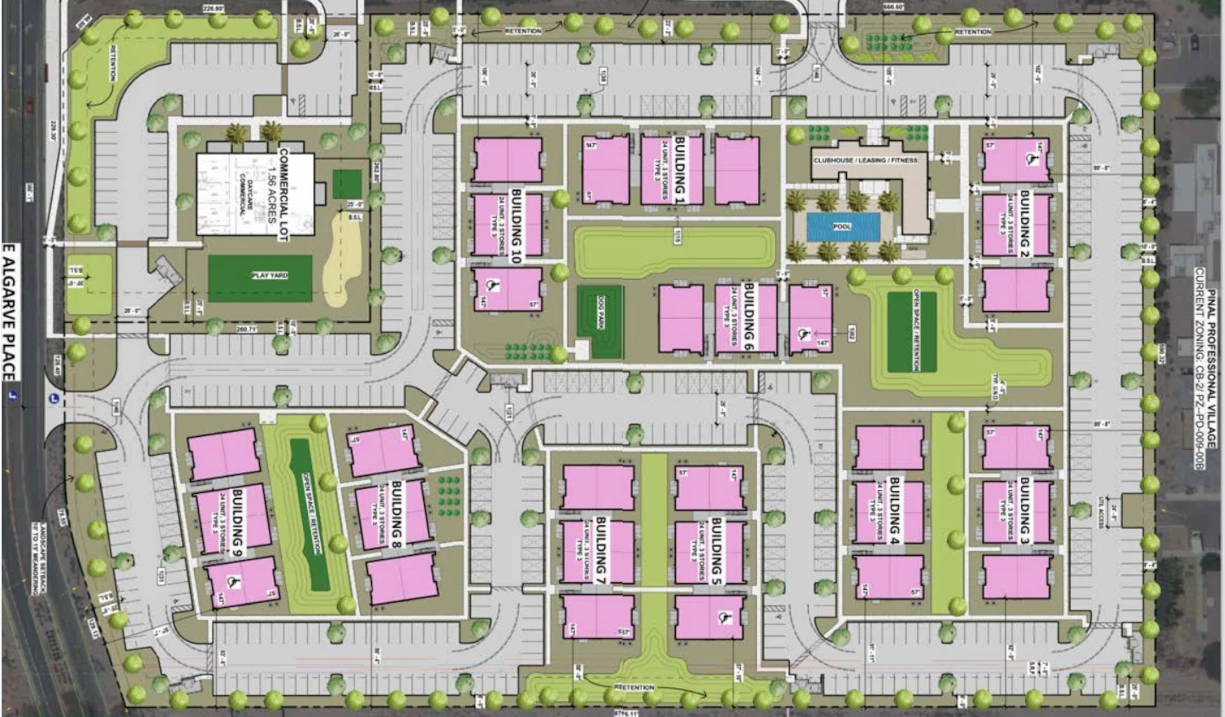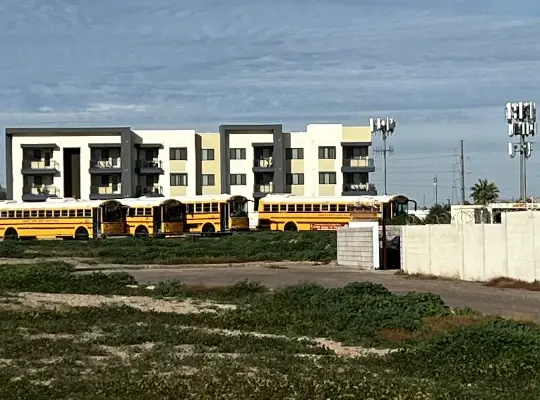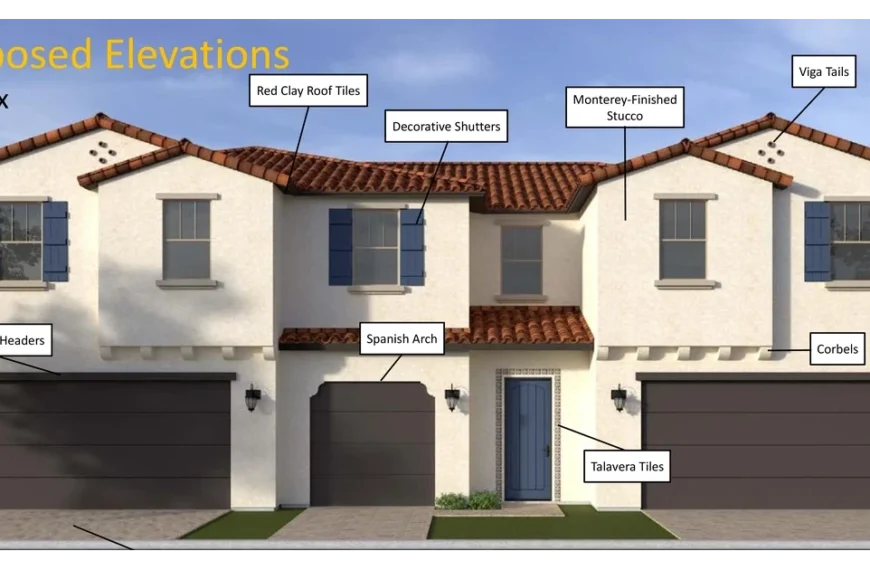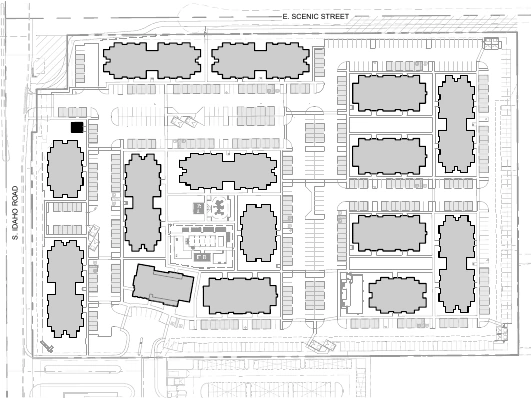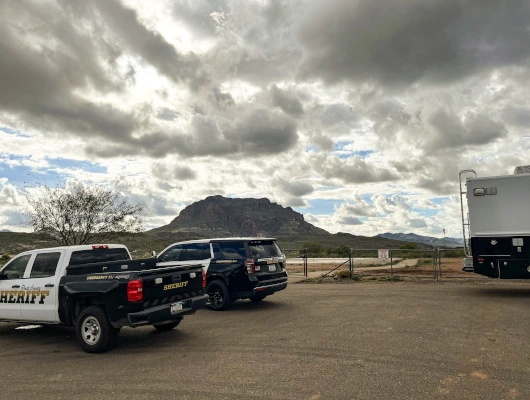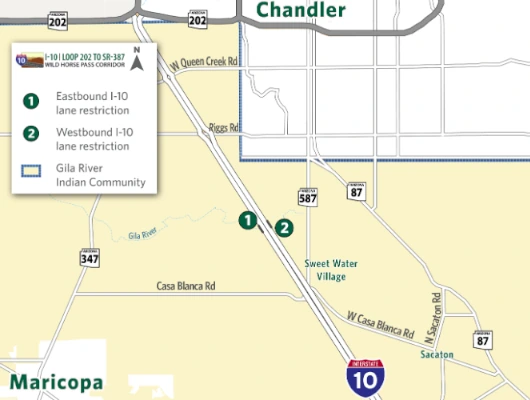Controversial 240-unit apartment complex and daycare proposal sent back for redesign following strong community opposition
The Pinal County Board of Supervisors voted 3-2 on August 6th to remand the controversial Homestead Mixed-Use development back to the Planning and Zoning Commission, giving the applicant another opportunity to redesign the project after facing strong opposition from Encanterra residents and others. Supervisors Miller, McClure, and Serdy voted in favor of the remand, while Supervisors Goodman and Vitiello voted against it.
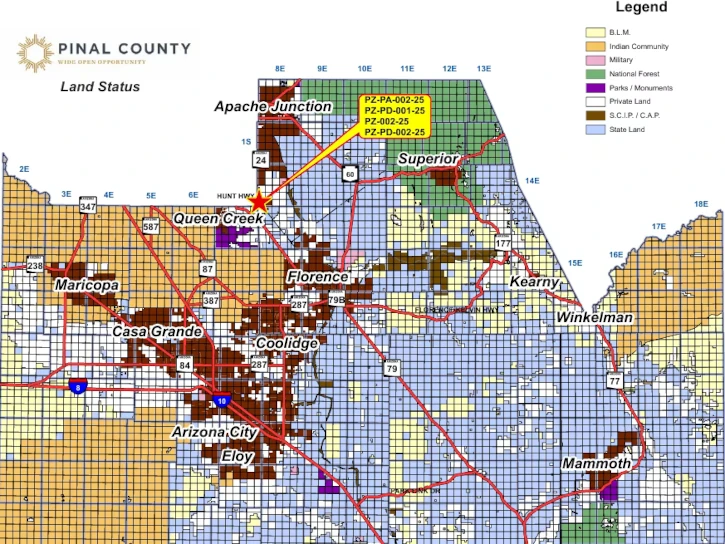
The decision came after public testimony regarding the proposed 240-unit apartment complex and daycare center on 12.45 acres at the northeast corner of Gantzel Road and Algarve Place in San Tan Valley. Staff reported receiving 952 letters of opposition compared to 215 letters of support for the project at the Board meeting, an increase from the 930 opposition and 88 support letters reported at the Planning Commission level. As previously reported, the Planning and Zoning Commission failed to recommend approval of the key development components in June. Details about the proposed development, including site plans, community context, and initial public opposition, can be found in our previous coverage.
The Board considered four related agenda items for the development: removing the property from an existing planned development district, changing the land use designation from Community Center to Urban Center, rezoning 10.9 acres from commercial to residential with 1.56 acres remaining commercial, and establishing new planned area development standards allowing 240 units at 22 units per acre. The applicant, represented by Rose Law Group on behalf of Wolff Enterprises III LLC, requested during the meeting a continuance to October 15th instead of the September 17th date listed on the agenda, but settled for the remand option.
Distinguished Opposition Speakers
Two speakers carried particular influence during the public hearing. Jeff Brown, a Queen Creek Town Council member, delivered the Queen Creek Town Council’s opposition to the project on behalf of the Town Council and residents.
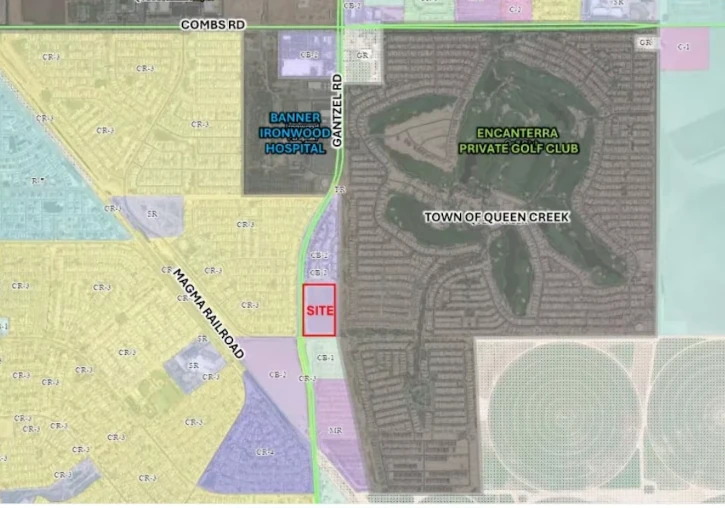
“The switch in the proposed use from commercial to largely residential does not conform to the needs of the location nor the understanding of the residents of Encanterra,” Brown stated. He argued the three-story development would be “out of character for the built environment” compared to the predominantly one-story Encanterra development to the east and the one-to-two story Meadows development to the west. Brown emphasized this was “a missed opportunity for future medical development” due to the site’s proximity to the hospital campus.
Brown noted that the application would impact 12.5 acres contained entirely within the Town of Queen Creek’s planning area, with Encanterra residents being constituents of both Queen Creek Town Council and the Pinal County Board of Supervisors. He argued the project would be better suited for Development Areas 5, 6, and 7 of the San Tan Valley Urban Core Plan, which specifically includes high-density residential and mixed-use development beginning as close as one mile south of the property.
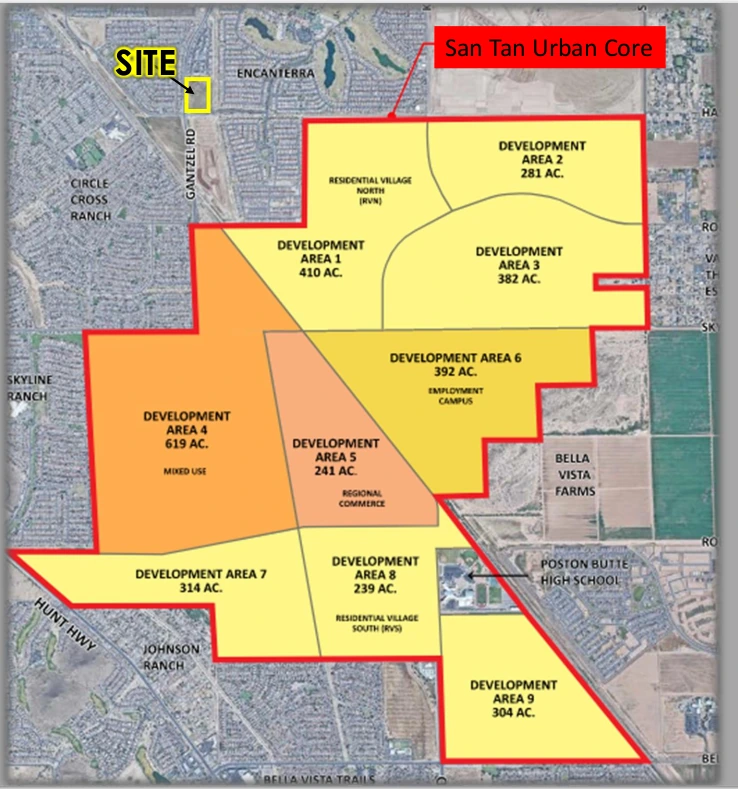
Karen Mooney, a Pinal County Planning and Zoning Commissioner and 16-year San Tan Valley resident, provided detailed statistics about commercial land conversion and apartment market saturation. “Since 2017, there have been 192 acres of commercial property rezoned to residential,” Mooney stated. She emphasized the 11% apartment vacancy rate in San Tan Valley since mid-June and questioned the need for more apartments when current approved developments haven’t been completed.
Mooney outlined the types of commercial development needed: “Not just big box commercial, we need office space, executive suites, hospital specialist offices, sit-down restaurants, just to name a few.” She noted that daycare centers can be built on commercial property and emphasized the gaps in many retail categories. Mooney advocated for letting “the current approved apartments, multifamily and build-to-rents, get completed before converting any more commercial property,” noting there are “just under 3,000 apartments already approved in the San Tan Valley area” plus “approximately 40,000 more homes that have been approved to be built here.”
Mooney also questioned the property owner’s marketing efforts, asking “how long the current owner has had the property and hear a list of companies and organizations they have contacted to consider building commercial on this site,” though this question was not answered during the meeting. She cited the Home Depot on Hunt Highway as an example of successful commercial development after a site visit, noting the company “were amazed at the number of homes in the area and the potential they were missing out on, and then they built.”
Resident Opposition
Multiple Encanterra residents spoke against the project, highlighting concerns not covered by the distinguished speakers. Rod Buchanan, an eight-year Encanterra and Pinal County resident with 40 years of local government experience, criticized the developer’s limited community outreach. He noted the developer “chose not to expand the minimum notification area to reasonably include thousands in our community” despite knowing residents would be concerned about commercial development being changed to multi-family rezoning.
Buchanan argued the project “would sharply increase the local population without the infrastructure to support it and eliminate the very commercial land needed to serve it,” calling this “poor policy” that conflicts with the comprehensive plan’s emphasis on preserving areas for commerce. He connected the opposition to recent incorporation efforts, stating the project “takes advantage of the county approval process unlike local framework of an unincorporated city.”
Steve Feller highlighted traffic safety and density concerns, describing Gantzel Road as “a traffic nightmare in the working” and warning that adding a childcare center would create “one of the worst ideas I’ve ever heard.” He noted the area had experienced “360 accidents in a one-year period in that stretch of road” with some fatalities. Feller emphasized the project’s density was “totally out of character” for the area, with “nothing even close to this in density” and described the region as “super saturated with multifamily” with “over 1,700 units on tap coming online within a four-mile radius.”
Steve Poe provided detailed rental market analysis, citing an 11% vacancy rate and rental prices declining 17% over the past year. He listed four nearby apartment complexes with significant availability: Acero Harvest Station (10 of 240 units available), Vlux (43 of 241 units available), Bungalows on Combs (193 of 317 units available), and Stella Apartments (173 units available). “Just those four attainable housing units that are available right now, there’s a 39% vacancy,” Poe stated, questioning “why would we build more?”
Pat Aritz criticized the request for a continuance, pointing out that 47 days had passed since the Planning Commission meeting—ample time for the applicant to prepare. He argued that neither housing density nor traffic issues would improve unless the property remained zoned for commercial use, warning that San Tan Valley risked “becoming a dormitory, not a bedroom community—a dormitory for Maricopa County.” Citing county studies and a video presentation by Supervisor Goodman earlier that day highlighting the need for commercial goods and services, Aritz contended the project would benefit “no one in Pinal, San Tan, or Queen Creek—only the developer.”
Other residents raised concerns about commute times increasing due to traffic congestion, with Lindy Baker noting her morning commute to San Tan Village in Gilbert had grown from 30 minutes to 45 minutes to an hour during the school year. Ken Lawler, whose property backs directly to the proposed site, described experiencing sirens and emergency vehicle lights almost daily, correlating with the 359 incidents reported on the thoroughfare.
Applicant’s Response on Supporter Absence
Jordan Rose, representing the applicant, explained why project supporters weren’t present at the meeting. “The supporters, which number in the hundreds and are all from Pinal County, not from cities, but from the county, are working people who have to take off work to come here and they aren’t here today,” Rose said. She noted they told supporters not to attend because the agenda indicated a continuance request and explained the difference in availability: “These people that are our supporters all work. They’re not retired… So, and I’m not insulting people who aren’t retired. That’s great. But just the stage of life, they have to actually take off work.”
“When they see something that says ‘requesting continuance,’ and I don’t say, ‘Hey, take off work,’ it would be unfortunate to have that,” Rose explained. She cited 109 signatures and 98 individual emails in support from working people in Pinal County.
Traffic and Infrastructure Arguments
Rose addressed traffic concerns raised by residents, arguing that retail development would generate significantly more traffic than the proposed residential use. “Traffic for retail is 53% to 75% higher than for this use,” Rose claimed, referencing information from their traffic engineer.
Rose also emphasized that the project would fund “millions of dollars of infrastructure improvements” to address current traffic problems on area roads. She pointed out that the proposed three-story buildings would comply with the current 35-foot zoning height limit.
Live, Work and Play
Supervisor Mike Goodman delivered extensive remarks outlining his opposition to converting commercial properties to high-density residential. He provided detailed statistics about approved developments: “21 additional single-family home projects that have been approved, 8,945 units. 13 additional multi-family projects have been approved, 2,860 units. Out of those 13 that have been approved already, only four of them are in construction at this point.” Goodman noted that 11 of these residential developments had removed 191 acres of commercial property.
Goodman emphasized the tax revenue value of commercial properties, noting that “City of Mesa doesn’t have a property tax” and operates in “a county that has the lowest property tax in the entire state of Arizona.” He stressed the need for medical providers, stating, “We have a big need for the medical providers to be located out here.”
Despite his opposition to the residential conversion, Goodman expressed appreciation for Rose Law Group’s efforts: “I really, and I appreciate all the efforts and everything that you and other developers have done in our county.” He also confirmed the community’s need for daycare services, stating, “We have a large need for daycare in our community” and “that is a need that we have. I’m not gonna disagree with you.”
“We really have to look at these and be a lot more responsible in the decisions and the choices that we make, especially the five of us that sit on this, that’s going to make it to where we can live, work, and play in our community,” Goodman said. “Quality of life is so vital for every family today. Moms and dads need to be more at home.”
Goodman confirmed the community’s need for daycare services while advocating for commercial development that would serve local residents rather than forcing them to travel to Maricopa County for services. He emphasized his desire for the applicant to work collaboratively with residents, noting the importance of community input in developing an acceptable project.
Accommodation Efforts
Rose outlined several ways the applicant could accommodate community concerns. She indicated the client would consider “potentially adding some retail pads on the site” and expressed willingness to work with Queen Creek Council members and county residents to develop an acceptable project.
Rose emphasized the partnership between Wolff Company and WonderWise childcare, describing it as a model they hope “to roll this out now across the state as an example of cool ways to have attainable housing with childcare.” When discussing affordability, she noted the $1,700 monthly rent rate targets teachers, essential workers, and hospital staff, explaining it’s “below the build-for-rent, which is most of the product that you’re talking about, but above those units that some of the folks were citing that were, like, $1,300.”
Mixed-Use Alternative
Chairman Stephen Miller suggested exploring mixed-use development with “retail on the bottom and residential above,” describing it as “a product that actually has been popular in some areas.”
Miller also addressed the site’s development history, defending the applicant’s position that “if something was gonna develop there, it would have developed there” during its 19 years of vacancy.
However, Goodman disputed this characterization: “I don’t think it’s been actively promoted to be sold in the 19 years. They’ve been able to lease a lot of that property. From no signage or anything out there, this piece is for sale. They’ve had a farmer that’s been farming it. They’ve been able to keep it in ag status which is minimal taxes on it.”
Miller also noted that regardless of the current project’s fate, “if this project’s not built, the traffic will increase” due to ongoing regional growth. He added, “If we want the improvements on the infrastructure, we are gonna lean on the developers to make those improvements.”
Remand vs. Continuance
Vice Chair Jeff McClure clarified the difference between the Board’s options, explaining that a continuance would bring the project back to the Board in the future, while a remand sends it back to Planning and Zoning for potential redesign.
McClure made the motion to remand, stating: “I would make a motion to remand it to Planning and Zoning and see what they come up. I can deny it. I could ask for a denial, but something else is gonna come. If we remand it, they get a chance to do something different. It may not be apartments. It may be something totally different, in which case we can deny that one or remand it again. I’m not saying I’m against or for any of it. I’m just saying that I would remand it back to P&Z.”
Market Forces and Future Expectations
Miller expressed confidence in market-driven solutions: “No matter what, someone’s gonna go there someday. I think the market decides all this stuff. I’m just a free market guy.”
Supervisor Jeff Serdy indicated the project would need substantial changes for approval: “It’s gonna have to change drastically to be approved.” He posed a rhetorical question about expectations for any redesigned proposal: “So if we send this back and they understand they better come back with 90% plus commercial? Which is what we need. We need doctors, we need daycare.”
The remand sends the project back to the Planning and Zoning Commission with no timeframe restrictions, unlike a denial which would have prevented resubmission for six months. The applicant must now decide whether to pursue a significantly different development plan that addresses the Board’s clear preference for commercial uses while maintaining community support for any residential or mixed-use components.
